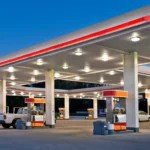Envy, often perceived as a detrimental force, plays a significant role in the realm of art, shaping the dynamics among creators. It serves as both a motivator and a Art:2ibo2mom4ik= Envy hindrance, sparking competition that can lead to innovation while simultaneously risking collaboration. This duality raises intriguing questions about the nature of artistic growth and community. How can artists harness envy to foster creativity rather than allow it to breed animosity? Exploring this complexity may reveal unexpected insights into the intricate relationships that define the artistic landscape.
The Nature of Envy in Art
Envy often creeps into artistic expression, influencing both creators and audiences alike. This complex emotion manifests in various forms, often giving rise to what can be termed “jealous inspiration.” Artists may find themselves envious of a peer’s success or unique perspective, which can lead to a fervent desire to emulate or surpass that individual. Such feelings can spark a powerful drive for self-improvement, pushing creators to expand their skills and explore new concepts, ultimately enriching their work.
Moreover, artistic rivalry frequently emerges from this envy, as creators compete for recognition and validation within their fields. This rivalry, while potentially toxic, can also serve as a motivating force, encouraging artists to innovate and refine their craft. It fosters a dynamic environment where ideas are exchanged, and excellence is pursued relentlessly.
However, the darker side of envy can lead to destructive behaviors, such as sabotage or the unwillingness to acknowledge the achievements of others. Striking a balance between healthy competition and destructive jealousy is essential for artists seeking to cultivate their freedom of expression while navigating the complexities of interpersonal relationships within the artistic community.
Read Also: Art:2fyfvicoex0= Michaels
Envy as a Creative Art:2ibo2mom4ik= Envy
The interplay between envy and creativity often reveals itself as a driving force behind artistic innovation. Envy, while frequently viewed as a negative emotion, can serve as a source of envy-driven inspiration, prompting artists to push their boundaries and explore new ideas. This complex emotion can ignite a spark of competitive creativity, motivating individuals to refine their work in response to the achievements of their peers.
In the realm of art, this competitive edge often leads to the emergence of groundbreaking techniques and styles. The desire to stand out and be recognized can transform envy into a powerful motivator, driving artists to confront their limitations and explore uncharted territories.
Moreover, the acknowledgment of others’ successes can catalyze a deeper understanding of one’s own artistic voice. By examining what evokes envy, creators can identify gaps in their work and seize opportunities for growth.
Ultimately, when harnessed constructively, envy becomes not a hindrance but a catalyst for artistic evolution, encouraging a continuous dialogue between creators and their environment. In this way, it fosters an atmosphere where innovation thrives, leading to the birth of extraordinary artistic expressions.
The Impact on Artistic Communities
Artistic communities often thrive on a dynamic interplay of emotions, with envy playing a significant role in shaping their collective identity. This complex emotion often fuels collaborative tension, prompting artists to push their creative boundaries in response to the perceived achievements of their peers. Such tension can manifest as artistic rivalry, fostering a spirit of competition that can elevate the quality of work produced within the community.
When artists feel a sense of envy, it can lead to innovative breakthroughs, as they seek to distinguish themselves from their rivals. This rivalry, while rooted in personal ambition, ultimately contributes to a richer artistic landscape, as diverse perspectives and styles collide and intertwine.
However, it is crucial for artistic communities to navigate this rivalry wisely; unchecked envy can spiral into destructive behaviors that undermine collaboration and harm relationships.
In essence, while envy can be a double-edged sword, its presence within artistic communities serves as a catalyst for growth and inspiration. By embracing the complexities of emotional interplay, artists can transform envy into a powerful force for collective creativity, fostering an environment where freedom of expression flourishes.
Read Also: Art:2duyrfo7t9m= Romeo and Juliet
Conclusion
In the intricate tapestry of artistic expression, envy serves as both a spark and a shadow. When embraced, this emotion can ignite innovation and foster a collaborative spirit, pushing artists to transcend their limitations. However, unchecked envy risks unraveling Art:2ibo2mom4ik= Envy fabric of community, leading to discord and isolation. Recognizing the dual nature of envy allows for a balanced approach, transforming potential rivalry into a symphony of creative collaboration that enriches the artistic landscape.







